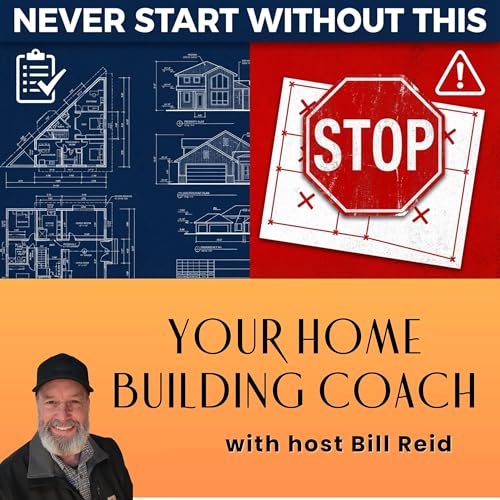Floor area ratio (FAR) is the master rule that determines exactly how big your home can actually be—and most homeowners don't discover it until they're facing expensive redesigns or permit denials. This episode exposes the hidden complexities of FAR calculations and provides a proven action plan to avoid the costly surprises that plague unprepared homeowners.
Bill Reid shares the real story of a Bay Area couple who calculated they had room for a 3,200-square-foot home, only to discover during permit review their actual FAR was 63%—massively over the 45% maximum allowed. The damage: $8,000 in redesign fees, three months of delays, and eliminated beloved features. All completely preventable with proper due diligence before purchasing property.
The seemingly simple floor area ratio formula (Building Area ÷ Lot Area = FAR %) becomes surprisingly complex in practice. Different cities have wildly different definitions of what counts as "floor area." Garages might count fully, partially, or not at all. Covered porches can be 0%, 50%, or 100%. High ceilings can count as multiple stories. Finished attics typically count if they have windows.
But complications don't stop with building area. Your lot size shrinks too when accounting for easements, steep slopes, required setbacks, and protected areas. That 6,000-square-foot lot might only be 4,950 square feet for FAR purposes.
Bill reveals how a comfortable 38% FAR calculation with a 7% buffer can instantly become 48% (over the maximum) when you factor in all the elements cities actually count. The compounding effect of both building area surprises and lot size adjustments means homeowners who think they have plenty of room often discover they're significantly over their allowed FAR.
🎯 In This Episode You'll Discover:
✅ What floor area ratio actually is and the simple formula that becomes deceptively complex
✅ Why cities use FAR to control building mass, preserve neighborhood character, and manage infrastructure
✅ The six surprise factors that inflate your building area: garages, covered porches, high ceilings, finished attics, basements, and stairways
✅ How different cities count the same elements completely differently for FAR purposes
✅ Why your lot size shrinks when accounting for easements, setbacks, steep slopes, and protected areas
✅ Real-world calculation showing how 38% FAR becomes 59% without adding a single room
✅ The Bay Area couple's $8,000 FAR disaster and exactly what they should have done differently
✅ Your complete 4-step action plan: research before buying, get professional survey, obtain rules in writing, design with FAR from day one
✅ Specific questions to ask your planning department to get FAR rules documented
✅ How to coordinate with architects, surveyors, and planning departments for FAR compliance
✅ When to address FAR in your project timeline (spoiler: BEFORE you buy property!)
✅ Common FAR variations between urban (50-100%), suburban (30-45%), and estate (20-30%) zones
✅ Strategic trade-offs to consider when designing within FAR limits
✅ Why building in a 2-3% safety buffer below maximum FAR is critical
✅ How FAR interacts with other zoning restrictions like setbacks, height limits, and lot coverage
📍 KEY TIMESTAMPS:
00:00 - Introduction: The Rule You Don't Know You Don't Know
03:00 - The Fundamental Question: Should You Build Whatever You Want on Your Property?
05:00 - What Is Floor Area Ratio? The Simple Formula Explained
08:30 - Why Cities Use FAR: Five Critical Reasons for These Restrictions
13:00 - The Calculation Complications That Catch Homeowners: What Actually Counts?
18:00 - Lot Size Complications: Why Your 6,000 SF Lot Is Actually Only 4,950 SF
22:00 - Real World Example: The $8,000 Bay Area FAR Disaster
25:00 - How to Navigate FAR Successfully: Your Complete 4-Step Action
 33 m
33 m 46 m
46 m 51 m
51 m 1 h
1 h 29 m
29 m 56 m
56 m 27 m
27 m 1 h y 1 m
1 h y 1 m
